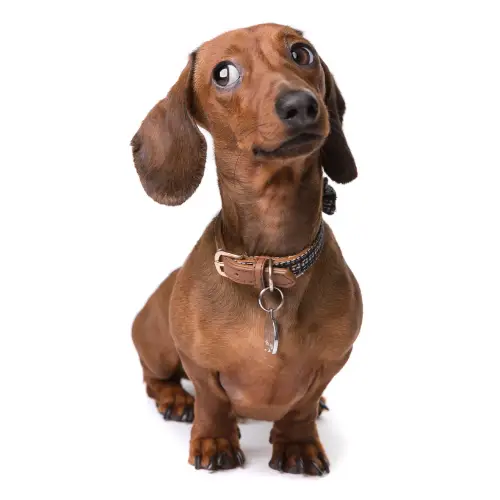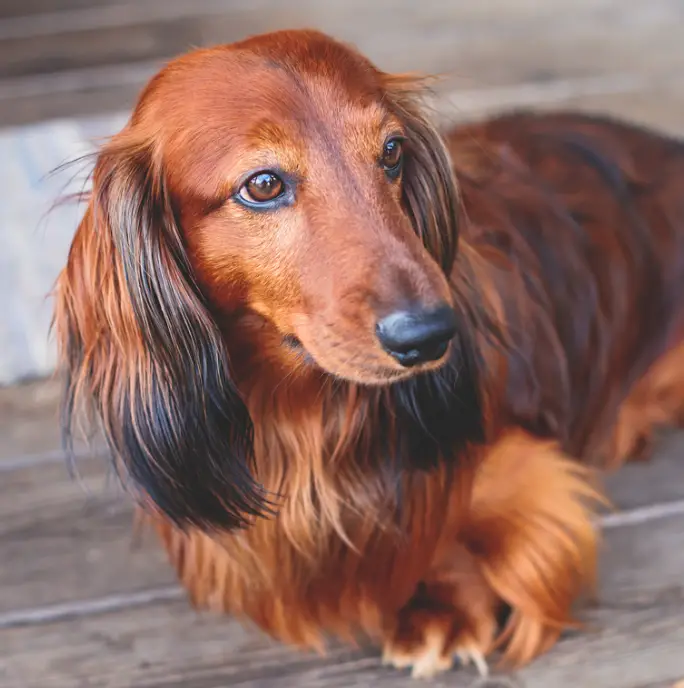Dachshunds, also known as “wiener dogs,” are a popular breed of small to medium-sized dogs. However, there is often confusion about how big a dachshund will get. Some people expect them to be toy-sized, while others are surprised by their size when fully grown. In this article, we will explore the growth and size of dachshunds to better understand how big they can get.
At What Age Is A Dachshund Fully Grown?
A Dachshund is considered to be fully grown at around 1-2 years of age. At this point, they have reached their full size and physical development. However, their mental and emotional development may continue to evolve and mature as they get older.
It is important to note that every dog is different and may reach full size at different ages. Factors such as genetics, diet, and exercise can all play a role in a Dachshund’s growth and development. It is recommended to consult with a veterinarian or breeder for more specific guidance on the growth and development of a Dachshund.
When Do Dachshunds Stop Growing?
Similar to humans, dogs have growth plates that close when they reach a specific age and are fully developed. It might be challenging for some owners to determine the precise moment at which dachshunds cease growing.
The dachshund’s growth plates open between the ages of 6 and 8 months, at which point you may predict your puppy’s size by using a weight chart for the breed.
Even when they are completely grown, dachshunds can still have puppy-like characteristics including a round face, soft fur on the coat, and a thin chest. But after two years, they will stop growing. If you can, have a look at your puppy’s siblings and parents to determine whether they are completely developed.
Looking at the previous litter from the same parents will give you a good idea of the future physical characteristics of your puppy.
What Are The Factors That Influence A Dachshund’s Size?
There are several factors that can influence the size of a Dachshund:
- Genetics: The size of a Dachshund is largely determined by its genetic makeup, inherited from their parents. If a Dachshund has larger parents, they are more likely to be larger as well.
- Breed Standard: Dachshunds come in three size categories: standard, miniature, and toy. The breed standard dictates the size range for each category. Standard Dachshunds should be 16-32 pounds, miniature Dachshunds should be 11 pounds or less, and toy Dachshunds should be 8 pounds or less.
- Nutrition: A Dachshund’s size can also be influenced by their diet. If they are not getting proper nutrition, they may not reach their full potential size.
- Exercise: Regular exercise can help a Dachshund maintain a healthy weight and size. If they are not getting enough exercise, they may be larger than they should be.
- Health conditions: Certain health conditions, such as obesity or hormonal imbalances, can also affect a Dachshund’s size. If these conditions are not properly treated, they can cause a Dachshund to be larger than it should be.
What Is The Average Size Of A Dachshund?
The average size of a Dachshund is around 8-9 inches in height and 15-32 pounds in weight.
There are three different breeds of Dachshunds:
- Standard Dachshund: The standard Dachshund is the largest of the three breeds, with a height of 8-9 inches and a weight of 16-32 pounds.
- Miniature Dachshund: The miniature Dachshund is smaller than the standard Dachshund, with a height of 5-6 inches and a weight of 11 pounds or less.
- Toy Dachshund: The toy Dachshund is the smallest of the three breeds, with a height of 4-5 inches and a weight of 10 pounds or less.
Conclusion
A Dachshund is considered to be fully grown at around 1-2 years of age. At this point, they have reached their full size and physical development. However, their mental and emotional development may continue to evolve and mature as they get older.
It is important to note that every dog is different and may reach full size at different ages. Factors such as genetics, diet, and exercise can all play a role in a Dachshund’s growth and development. It is recommended to consult with a veterinarian or breeder for more specific guidance on the growth and development of a Dachshund.






